I just had a marvelous experience.
A local theatre just set up a restored 70mm
projector and the first film they showed was 2001: A Space Odyssey. The last time I watched this film was as a
teen, thirty years ago, on a small television screen, with me sitting across
the room, the volume not too loud so as not to disturb others who lived in the
house. My experience last night was right
in front of a huge screen, in front of a speaker, with my twentysomething son
and a friend.
Truly unforgettable. I could imagine being a film viewer in 1968,
when the lights dimmed and the 50’s sci fi music mystically settled the
audience down, then the room goes black, deadly black, we are in emptiness, the
blankness of space and then we see the sunlight display the outline of the
earth and the sunrise gives way to moonrise and all three orbs are gloriously magnificent
in the midst of space and Zarathustra stirs our soul, in preparation to an epic
spectacle.
I may have seen greater films that have been made since this
tremendous visual circus, but almost every epic since 1968 has been influenced
for the better by this one. Its
greatness cannot be questioned, and it cannot be forgotten.
For all of its importance and power, yet 2001 is a strange
duck. For a long epic film, the
narrative is minimal at best and incomprehensible at worst. Perhaps this is because Stanley Kubrick
wanted his viewers to work for the plot, to remain so dazzled that they will
examine the film and so piece together the story over time. But I suspect that isn’t the case.
Kubrick wrote the story and screenplay with Arthur C. Clarke,
one of the greatest science fiction writers of the twentieth century. They based the story on Clarke’s novella, The
Sentinel, but they worked so closely on this project that while Kubrick was
creating the film, Clarke was writing the novel, and the two works of art
really should be seen as two aspects of a single work, different mediums
working together, where one isn’t complete without the other. Only the film’s outline is comprehensible
without the novel, and the power of the story is lost without the film’s
visuals and music.
This is an unusual relationship between a novel and
film. Perhaps only George Lucas’
original Star Wars film and book has anything similar, in which the novel fills
out the film and the film empowers the novel.
I have deep questions that one was ever supposed to understand the
meaning of the film without the novel.
Although my son, in his first viewing of the film, was able to glean the
basic outline of the meaning of the film, only aided by hundreds of movies, tv
shows, video games and novels that have been influenced by this work of
art.
Yet there are many who are baffled by this film. And who wants to read the sci fi novel? So I will give you the basic elements of the
film, and in about 15 minutes you can sound as good as anyone else who has
guesses as to what the film is about. It’s
been about 25 years since I read 2001 and about that long since I read the
first sequel, 2010, but I remember it well enough to have a coherent idea of
the film. I will present the basic
foundation of the film, the purpose of many scenes and some guesses of my own.
As usual, I am open to any comments or corrections of my analysis.
Main plot
Incredibly
advanced aliens direct the evolution of humanity, from the dawn of man to
humanity’s next step, the Star Child.
Main subplot
Humans and their tools battle for rule of the
solar system.
The primary cycle
Humanity is in a restless peace.
Humanity is always seeking more power, more security, more of the
universe they can see and comprehend, but they are at their limit. The elegance
and peace of humanity is represented by Johann Strauss’ Blue Danube. A black monolith appears, and the voices of Requiem
by Gyorgy Ligeti, call humanity, disturbing the peace with a
mystical communication of knowledge that will take them to the next level. A human touches the monolith, to the theme of
Thus Spake Zarathustra and the communication is completed—humanity then has
knowledge of the path of the next level they must pursue. They will achieve the next level of evolution
only through power and domination, as Friedrich Nietzsche stated (who inspired
the piece Zarathustra).
Introduction I
With the theme of Zarathustra playing, we
are introduced to the line of communication from the heavens, including the
sun, the moon, to the earth.
The Dawn of Man
Proto-humans live peacefully with warthogs, in fear of violent
large cats and against other tribes over a muddy watering hole. A monolith appears, granting a single tribe
the knowledge of using tools, which they use for violence, both against the
warthogs for food and against other tribes in the first war for power over the
watering hole.
The tool of a bone shifts to the tool of a
space-plane in 2001, where tools now are so complex and huge that they encompass
humanity. This harmony between tools and
humanity are highlighted by elegant flight and the elegant Blue Danube. Heywood Floyd travels to the moon to examine
a monolith uncovered 40 feet beneath the surface, buried 4 million years
previous. This is clear evidence of alien
life. After Dr. Floyd touches it, a
signal is sent to Jupiter, communicating to the aliens, and directing humanity
to Jupiter to receive their next communication.
Journey to Jupiter
As we are introduced to the crew members, we notice that one of humanity’s tools, HAL 9000 is treated as an equal member of humanity. HAL is uncomfortably human and the pilots are uncomfortably sub-human, with each of them meeting in the center of a humanity shaped by tools and tools becoming more human. HAL is infinitely smarter than any single human, with greater logic and able to run the ship to such a degree that the pilots are dependent on him.
As we are introduced to the crew members, we notice that one of humanity’s tools, HAL 9000 is treated as an equal member of humanity. HAL is uncomfortably human and the pilots are uncomfortably sub-human, with each of them meeting in the center of a humanity shaped by tools and tools becoming more human. HAL is infinitely smarter than any single human, with greater logic and able to run the ship to such a degree that the pilots are dependent on him.
HAL, while on the trip, comprehends the true purpose of the
mission, that aliens will confer on humanity the next evolutionary step. HAL, perhaps considering humanity inferior to
their tools, plots to kill the humans and to take the step himself. HAL kills off Frank and the rest of the crew
in stasis, and then isolates Dave Bowman in space. Dave, using the mechanical system on the ship,
not connected to HAL, is able to enter the ship at great risk. Although HAL has
greater logic than any human, he underestimates human determination to survive,
even to take on a huge risk. Dave takes
HAL’s chips out, causing him to regress to his birth. This is the final war of humanity, the
battle of whether humanity or their tools will take the next evolutionary step.
Jupiter and Infinity
David Bowman leaves his ship behind, travels to a monolith,
just beyond a moon of Jupiter. He
travels through a wormhole, into a room in which he quickly lives out the rest
of his life. At the moment of his death,
he reaches out to a monolith, which transforms him into the Star Child, the
mediator between humanity and the aliens, the dominating force of our solar
system.
60’s Mindset
The pace is slower than any other Kubrick film, except
perhaps The Shining, but why is this necessary?
It only offers to confuse and bore the audience. I think it has to do with that the film is
supposed to focus on visual spectacle, minimizing narrative—a huge picture book
for the novel, or the visual outline the written novel is supposed to explain. The slowest aspects of the film are dull to
our modern eyes, but we could understand that Kubrick wanted to showcase the
models of the complicated spaceships and the camera tricks that display
weightlessness. While these visual
effects are commonplace today, they are unique pieces of art that Kubrick
thought would keep the audience’s attention.
This film is very much caught in its timeframe, reminding us
again and again that it is a film of the 60’s, with a 60’s vision of the
future, as all visions of the future are ultimately reflections of their own
time. While the male doctors are given
the title “Doctor” the female doctors are called “ladies”, and servants are all
women. The fashion is just a step beyond the
time-restricted 60’s fashion, whether furniture or clothing. The final “mind blowing” acid trip of a
wormhole is little more than dye on glass, color filters and colored pen on film , and weak compared to some of the
spectacle we have seen in more recent years.
As forward-thinking as the film is, it remains an obviously 60’s vision,
which takes away the timelessness of most great films.
The greatest restriction of the film is the fact that it has
influenced so many films after it, from Solaris to Star Wars to Tree of
Life to Gravity. There is little in the film we
haven’t seen before. Yet it is still an
amazing film, worth seeing in all its 70mm glory. The ideas might be overused by others, but
its greatness shouldn’t be lost on audiences for all time.

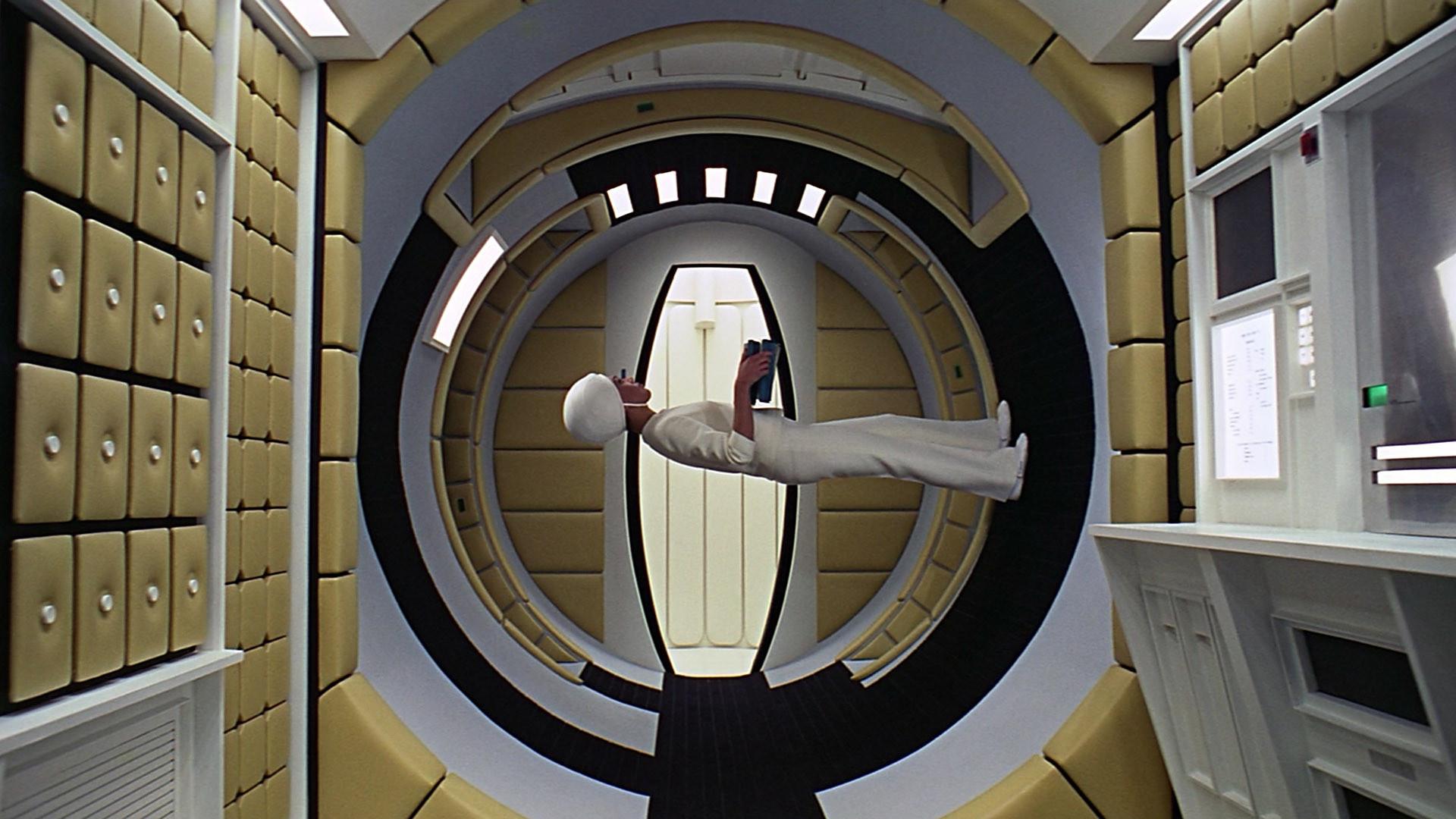
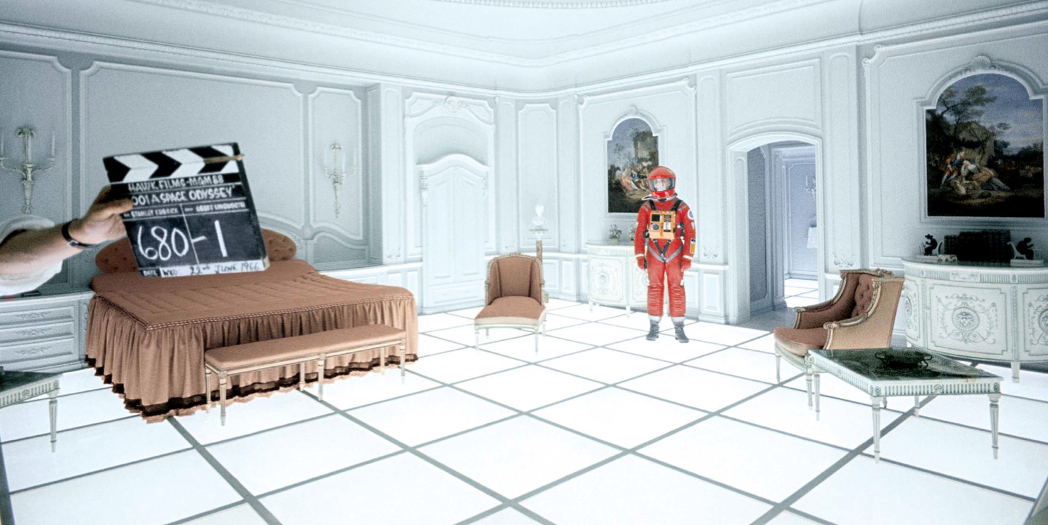

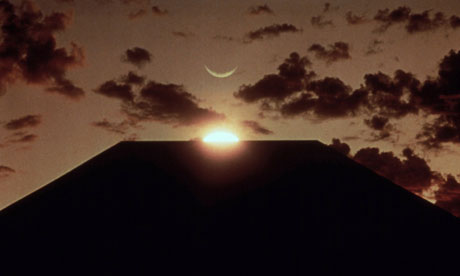
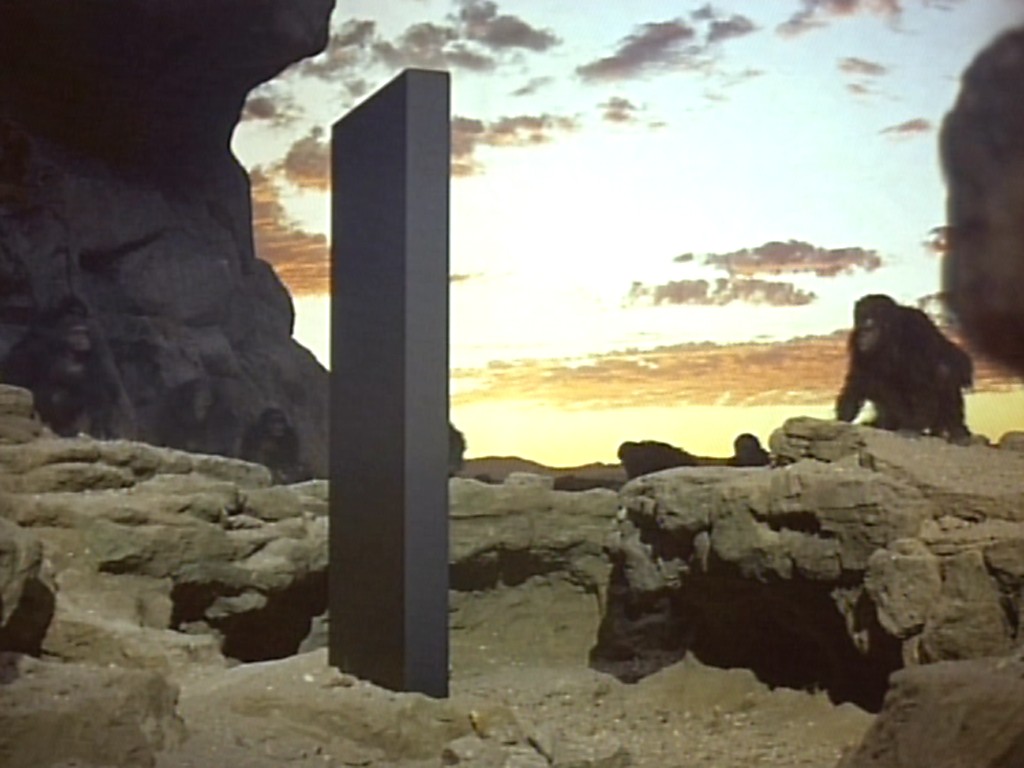
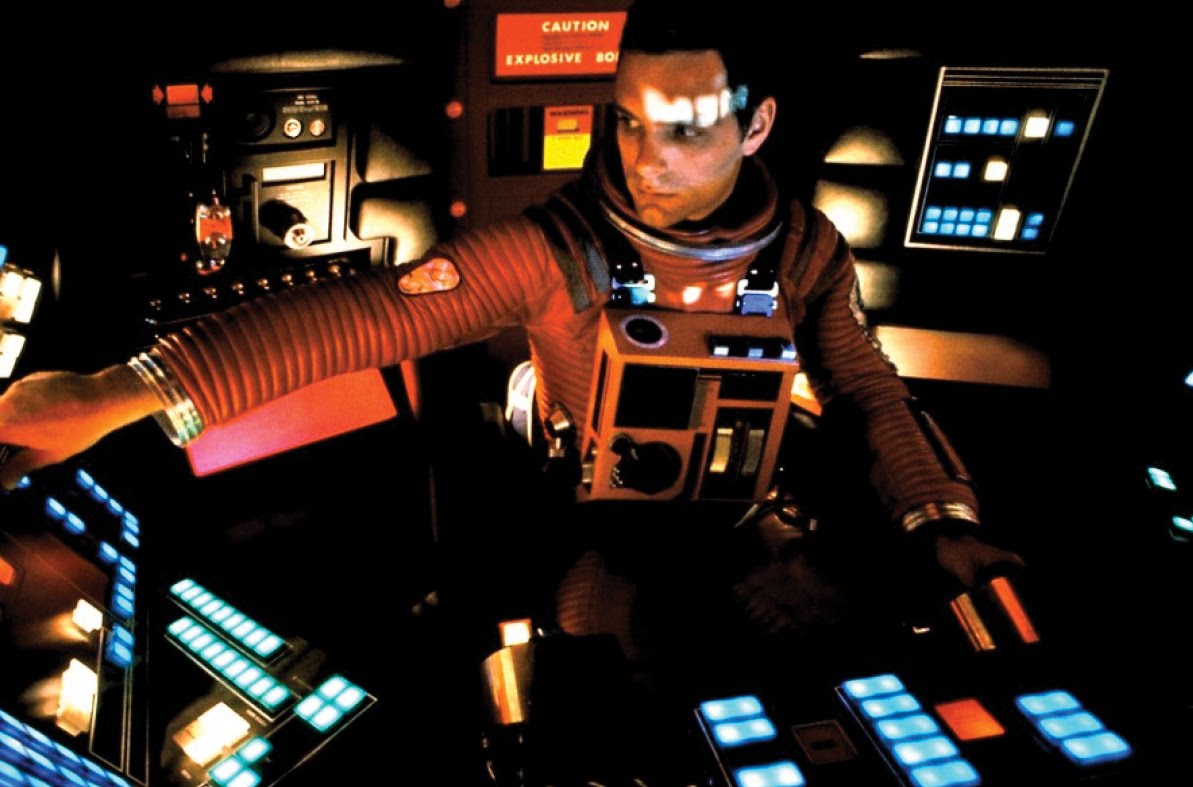

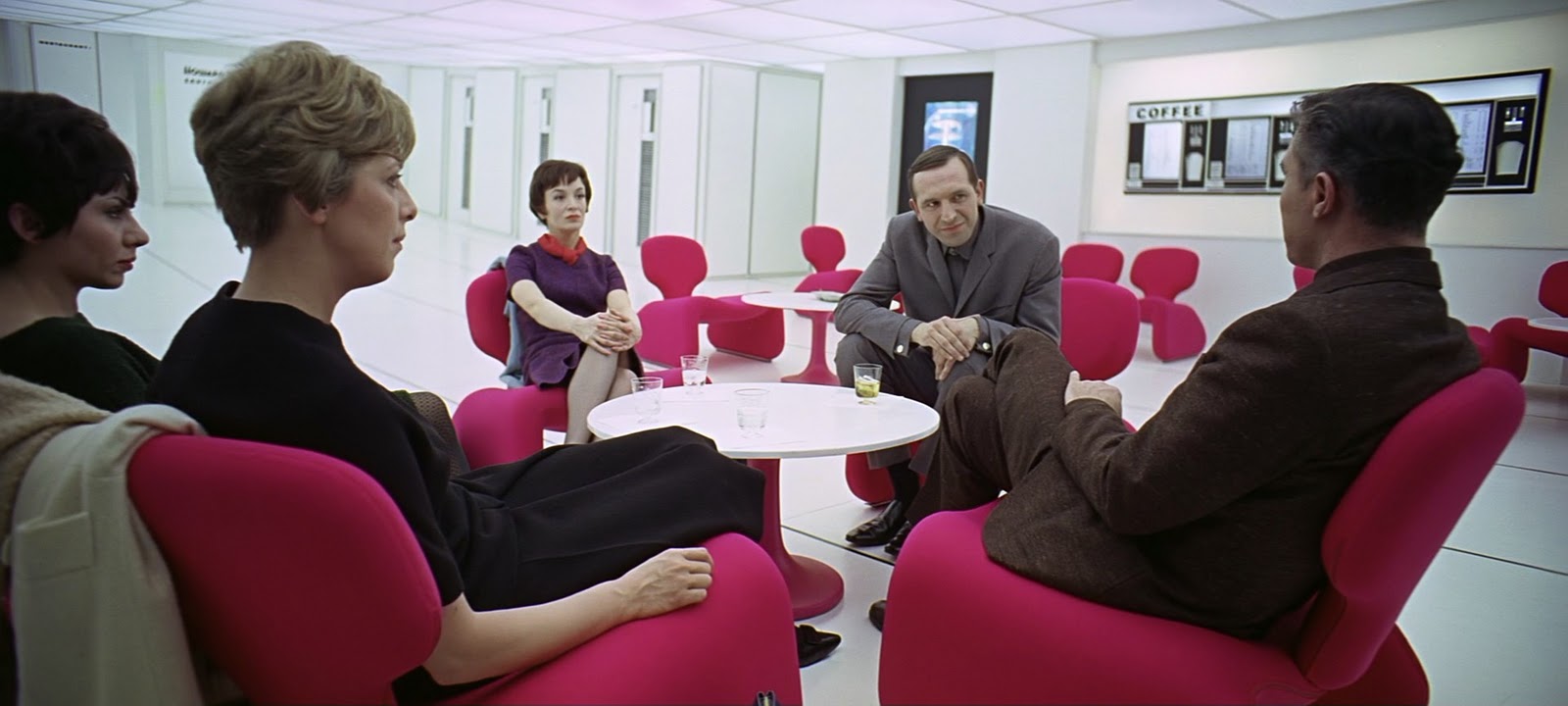

My name is Matt and I work at a website called Flavorwire. I love your analysis here (although I think Barry Lyndon is the slowest Kubrick film). I'd love your take on some of our movie lists that we put out. Could you email me sometime at Matt at Flavorpill dot com? Thanks and look forward to hearing from you!
ReplyDeleteI think Barry Lyndon moves along at a steady pace, and is pretty much to be expected for a historic drama. 2001, in my opinion, is slow because it spends so much time staring at models and trying to impress us with the special effects. Still, its greatness cannot be questioned.
Delete